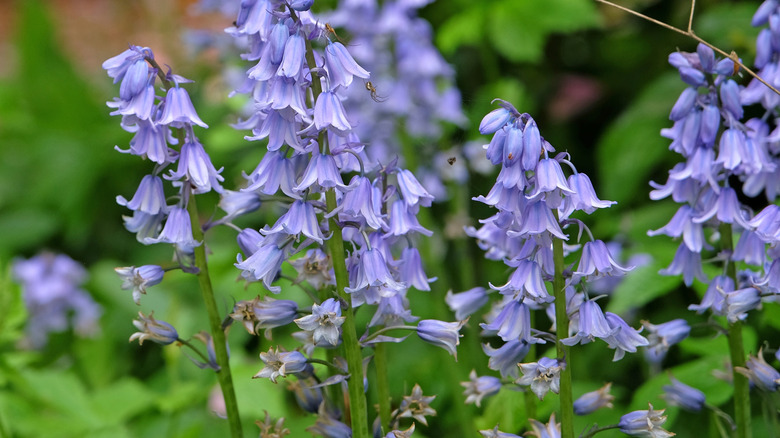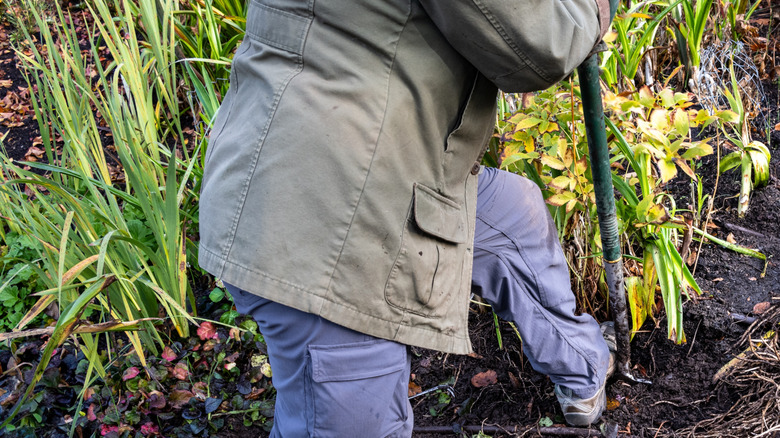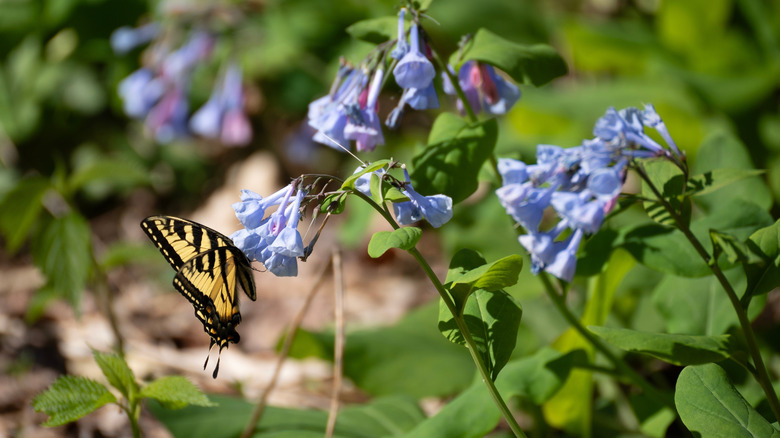The Hidden Downsides Of Planting Spanish Bluebells In Your Garden
We may receive a commission on purchases made from links.
Who doesn't love having a yard full of colorful spring-blooming bulbs? Spanish bluebells (Hyacinthoides hispanica), also known as wood hyacinths, are one such popular spring bulb. Before you go covering your yard and garden in them though, it's important to be aware of some of their downsides. These flowers are notorious for their ability to spread and take over natural spaces, and are considered invasive in parts of both the Pacific Northwest and the Mid-Atlantic. Perhaps less well known, they are also extremely difficult to remove and all parts of the plants are quite toxic.
Native, as their name might suggest, to Spain, as well as parts of Northern Africa, Spanish bluebells are hardy in USDA zones 3 through 8. Because they are beautiful and easy to grow, they've long been popular additions to gardens. So even if you haven't planted them yourself, you may already be dealing with a garden full of these aggressive but pretty plants.
The hidden difficulties of Spanish bluebell removal
The primary reason Spanish bluebells are so aggressive, and also the reason they are so difficult to remove, is because these plants don't reproduce by seeds. They also reproduce by growing additional bulbs. These bulb offsets are clones of the mother bulb. In many cases these bulbs, both the originals and the daughter bulbs, are too far underground to be easily removed by digging, making them a significant challenge to remove.
Often the only good way to remove Spanish bluebells is, unfortunately, by using a post-emergent selective herbicide that contains triclopyr, such as Alligare Triclopyr 4. Even then, it can easily take multiple applications. If you end up using an herbicide to rid your yard of Spanish bluebells, be sure to follow all the instructions on the bottle carefully and wear gloves and other necessary gear. Take care that no nearby plants are damaged by the spray as well.
Spanish bluebell's toxicity and what to plant instead
Even when herbicides aren't involved, you'll want to wear gloves while working with Spanish bluebells. These flowers have high-severity toxicity and often cause contact dermatitis. Skin irritation is just the start when it comes to their toxicity though. All parts of the plants are poisonous, and Spanish bluebells can even be fatal if ingested. While their toxicity does mean that they aren't likely to be nibbled by deer, it also makes them risky to have around if you have curious pets or young children.
Between their aggressiveness and their toxicity, Spanish bluebells just aren't worth it. Fortunately, you don't have to live without beautiful blue spring flowers in your garden. Virginia bluebells (Mertensia virginica) are considered an excellent substitute for Spanish bluebells. Not only are they native to North America, but they aren't toxic to pets or humans either. Hardy in zones 3 through 9, Virginia bluebells are the clear winner for North American gardens, having many of Spanish bluebells' advantages, and none of their hidden downsides.


